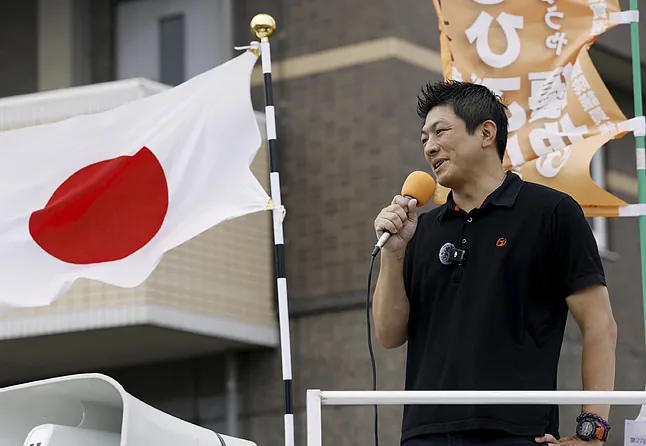The conservative party that has governed Japan for most of the country's post-war history may suffer another setback in the elections for the Senate this Sunday, potentially losing its majority. Last year, the coalition formed by the Liberal Democratic Party (LDP) of Prime Minister Shigeru Ishiba and its traditional junior partner, Komeito, was significantly weakened after losing the parliamentary majority in the general elections. Now, they need to win at least 50 out of the 66 seats up for reelection to maintain control of the chamber.
There are several challenges facing the world's fourth-largest economy at the moment. Internationally, Tokyo is desperately trying to reach a trade agreement with United States before the end of the month to prevent the 25% tariffs announced by President Donald Trump. However, the main battle for Ishiba's government (68 years old) is internal: the rise in rice prices, which have doubled this year, has become a lightning rod for voter discontent.
A rice crisis once brought down a Japanese government during massive protests in the early 20th century due to the rise in the price of this essential food in the Japanese diet. Now, inflation has led to a decline in the prime minister's popularity ratings. This issue adds to the weakness of the yen, the local currency, which has led to an increase in foreign tourists.
Resistance to excessive tourism has been growing, along with an increasingly accepted ultranationalist narrative. This has been capitalized on by the far-right, which could make a strong debut in these elections with the populists of Sanseito, who have campaigned against the "silent invasion of immigrants" in a country where foreign residents represent just 3% of a population of over 120 million people. Additionally, Japan increasingly needs more migrant labor due to the aging population: around 30% of the population is 65 years or older.
Sanseito is a product of YouTube, created by a former supermarket manager and English teacher named Sohei Kamiya (47 years old), who emerged during the pandemic by posting videos with various conspiracy theories about vaccines, lockdowns, and how it was all part of a sinister plan by global elites.
Kamiya's success has been in putting forward a party with a radical discourse that had previously been on the fringes of Japanese politics. The successive LDP governments have advocated nationalist and protectionist policies, but without crossing into extremism.
According to polls, Kamiya's anti-globalist profile, opposed to LGBT community rights and immigration, and in favor of food self-sufficiency, has attracted many male voters between 30 and 50 years old who are dissatisfied with traditional parties. The ultra party has called for a break from the post-war pacifist Constitution and defends old imperial slogans justifying Japan's expansion into other parts of Asia to extend its dominance.
"Japan must be a society that serves the interests of the Japanese people," Kamiya has repeated, openly declaring himself as anti-feminist. In a speech, he stated that women should stay at home taking care of their children instead of pursuing a professional career and labeled gender equality policies as "deceptive."
Japan holds elections for the Upper House every three years; this cycle will determine who will occupy 124 of the 248 seats. Currently, Sanseito has five legislators in Parliament. Other parties and many national media outlets have accused Kamiya of promoting a xenophobic discourse and exploiting public discontent with high prices and stagnant wages. In his latest interview, he admitted to having "copied" many of his aggressive proclamations and Trump's provocative language.
